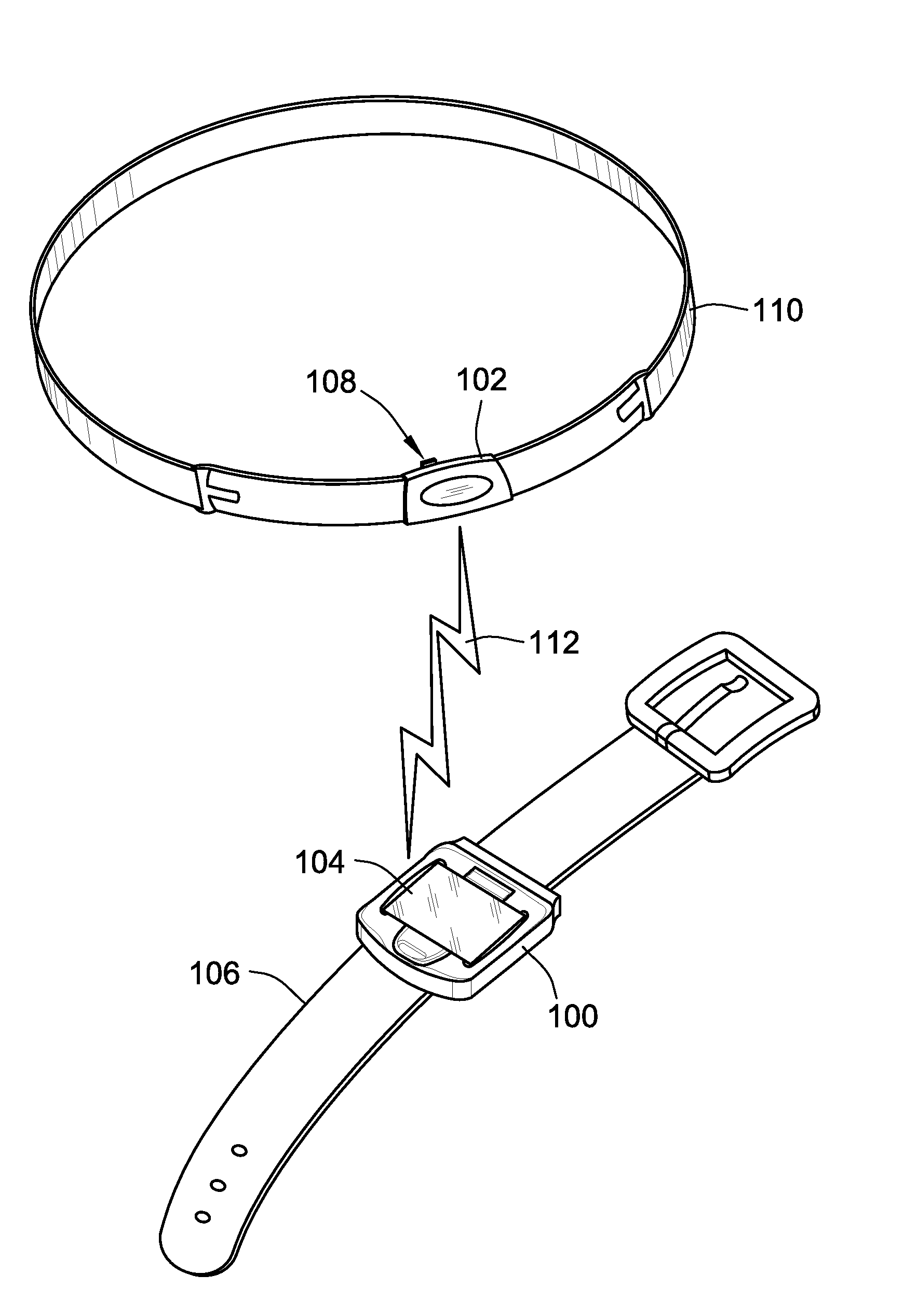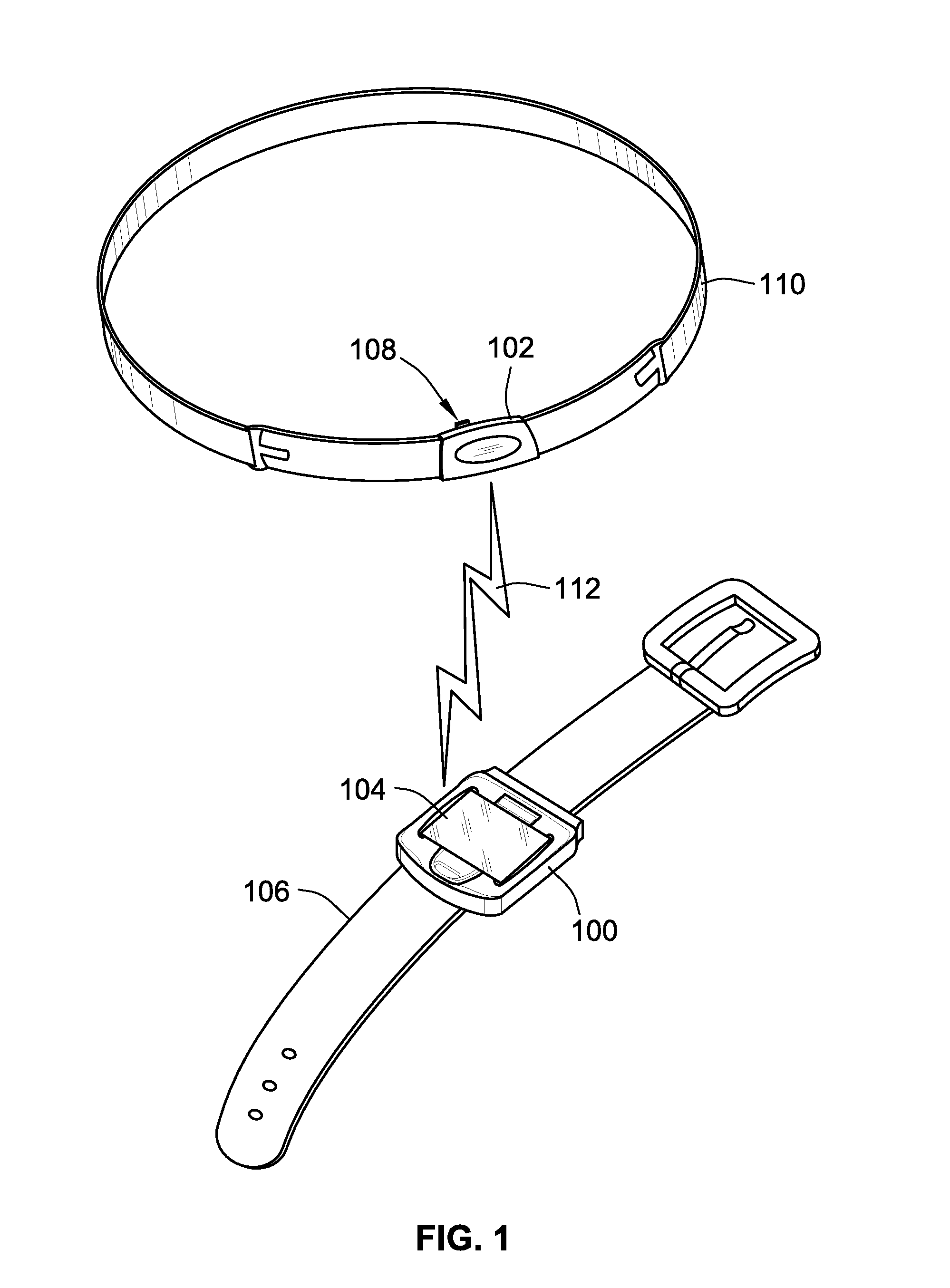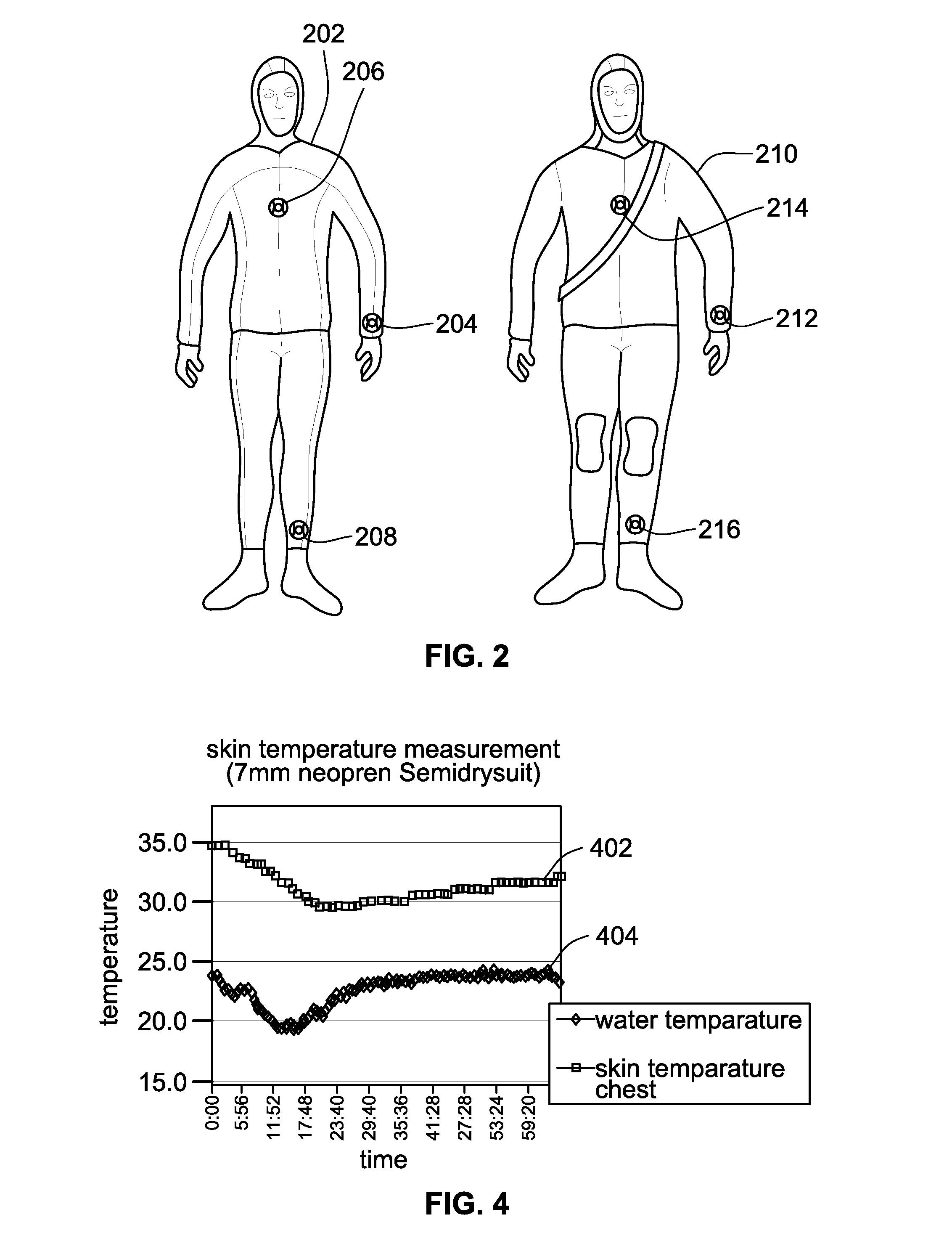Wireless skin temperature measurements in diving
a technology of skin temperature measurement and diving, applied in underwater equipment, medical science, diagnostics, etc., can solve the problems of inefficient diving algorithm determining decompression parameters that does not take into account skin temperature, decompression sickness, inert gas uptake, etc., to maintain or increase reduce the skin compartment pressure tolerance
- Summary
- Abstract
- Description
- Claims
- Application Information
AI Technical Summary
Benefits of technology
Problems solved by technology
Method used
Image
Examples
Embodiment Construction
[0026]FIG. 1 illustrates a dive computer 100 and a combination heart rate monitor and skin temperature measurement device 102. In the embodiment of the invention illustrated in FIG. 1, the measurement device 102 is wirelessly connected to the dive computer 100. While in the illustrated embodiment the connection is wireless, a wired connection is contemplated as well.
[0027]Measurement device 102 is configured to measure both a diver's heart rate and skin temperature and transmit a diver's physiological data that includes heart rate data and skin temperature data 112 to the dive computer 100. The measurement device includes a sensor 108 to take the preferred measurements from the diver. The sensor 108 is small enough such that it does not cause a localized warming effect to the skin where the measurement is being taken.
[0028]In the embodiment illustrated in FIG. 1, the measurement device 102 is attached to an attachment strap 110. Typically, heart rate measurements are performed on th...
PUM
 Login to View More
Login to View More Abstract
Description
Claims
Application Information
 Login to View More
Login to View More - R&D
- Intellectual Property
- Life Sciences
- Materials
- Tech Scout
- Unparalleled Data Quality
- Higher Quality Content
- 60% Fewer Hallucinations
Browse by: Latest US Patents, China's latest patents, Technical Efficacy Thesaurus, Application Domain, Technology Topic, Popular Technical Reports.
© 2025 PatSnap. All rights reserved.Legal|Privacy policy|Modern Slavery Act Transparency Statement|Sitemap|About US| Contact US: help@patsnap.com



